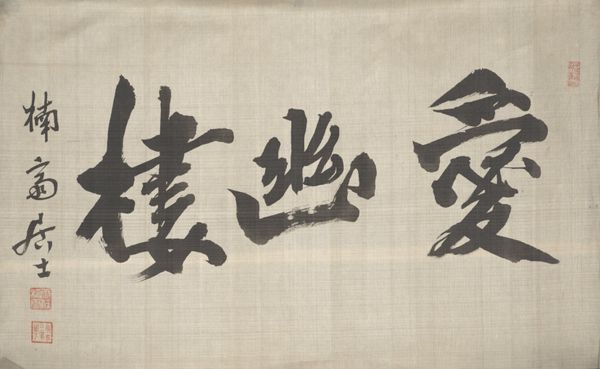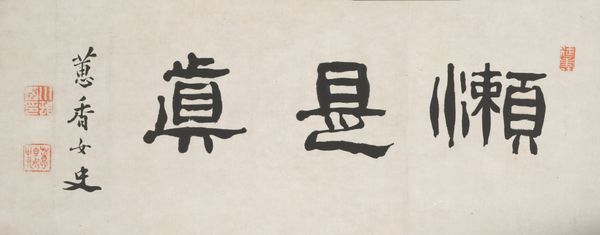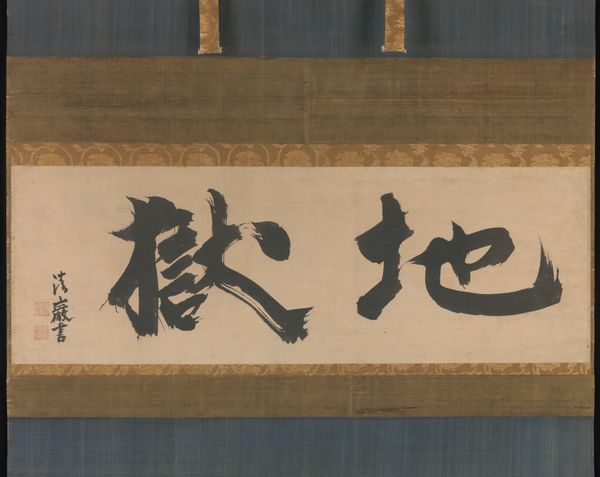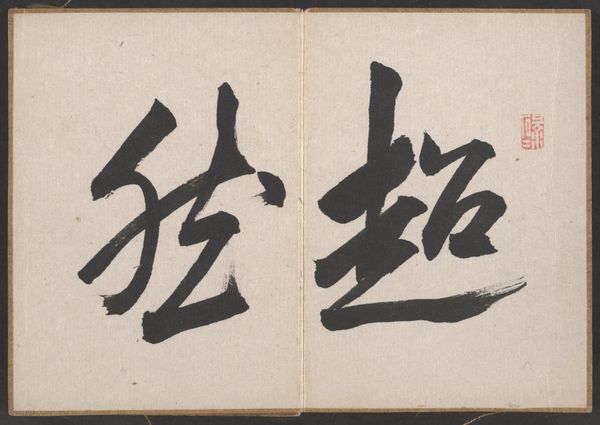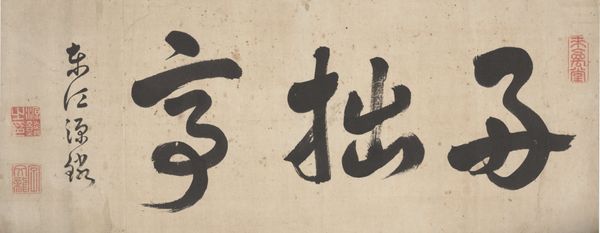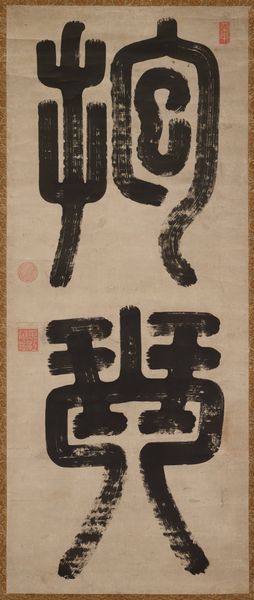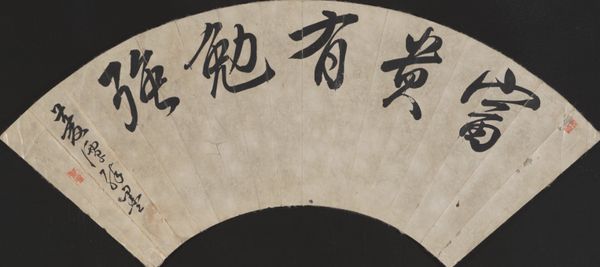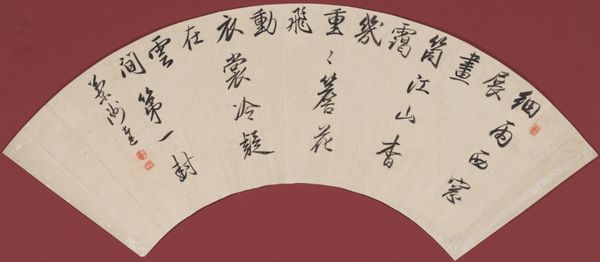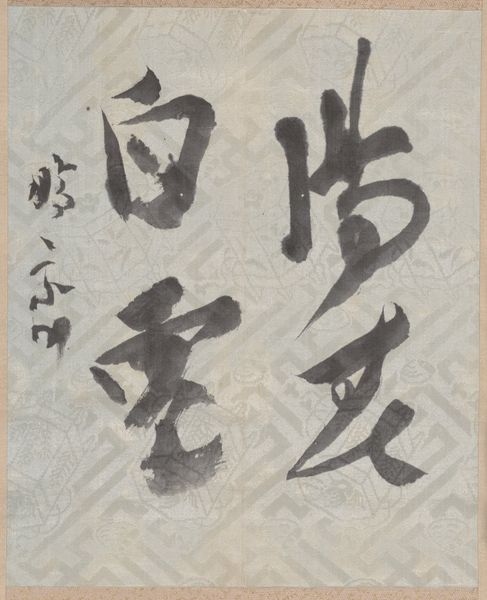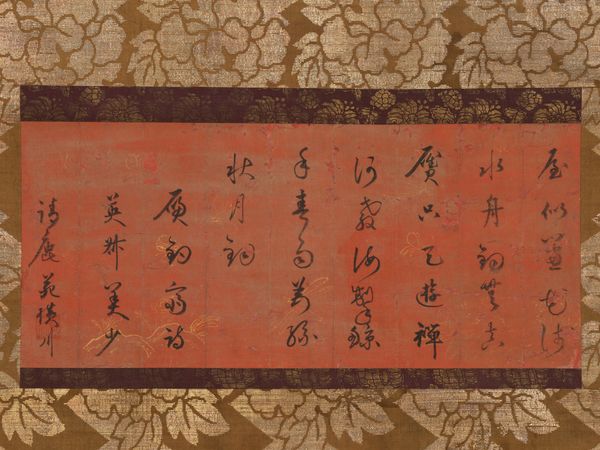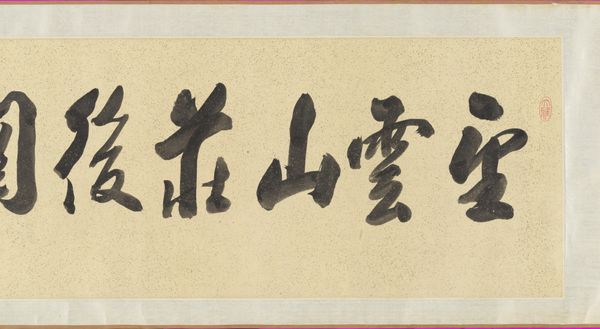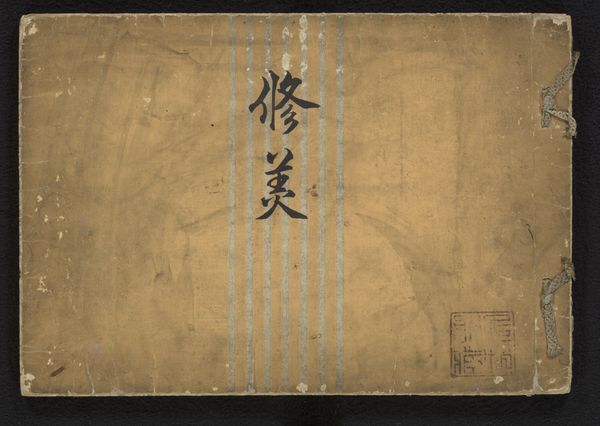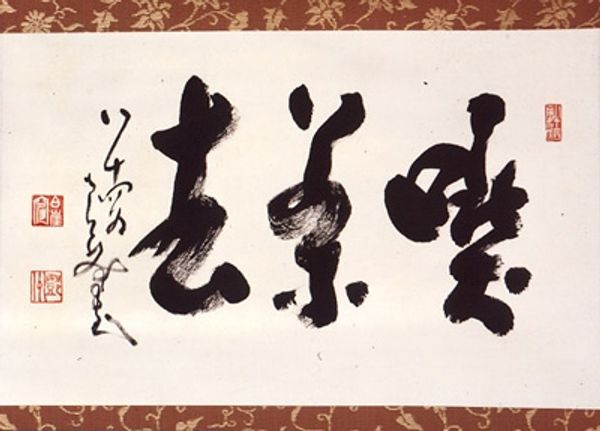
paper, ink-on-paper, hanging-scroll, ink
#
asian-art
#
japan
#
paper
#
ink-on-paper
#
hanging-scroll
#
ink
#
calligraphy
Dimensions: 8 3/4 × 16 3/16 in. (22.23 × 41.12 cm) (image)40 3/8 × 17 7/8 in. (102.55 × 45.4 cm) (mount, without roller)
Copyright: Public Domain
Editor: This is "Sophisticated Eloquence," or "Funju" in Japanese, made with ink on paper, dating back to the mid-17th century by Seigan Sōi. The sheer scale and boldness of the brushstrokes is immediately striking. It feels very direct and powerful, almost confrontational. What are your impressions of this work? Curator: Indeed. If we attend closely to the disposition of the marks, one appreciates the controlled dynamism at play. Consider the contrast between the density of the ink in certain areas and the dry, almost fractured quality in others. The composition guides the eye from left to right and back again. Editor: So, the visual experience is not only immediate but also cyclical? Curator: Precisely. The interaction of positive and negative space is key. The stark black calligraphy commands our attention, yet it is the subtle variations within those strokes and the surrounding field of the paper that allow us to truly perceive its nuances. The artist orchestrates the textural variations so viewers perceive the calligraphy's structure and material existence. What effect do you think the addition of the red seals bring to the visual experience? Editor: I notice the placement is asymmetrical but somewhat balanced in that the weight of the script holds everything down. To your point, I notice that seals are integrated carefully into the texture so they are noticed in their relationship to other components of the piece. Curator: An excellent observation. Through meticulous visual analysis we've elucidated sophisticated aesthetic qualities of this hanging scroll by Sōi. Editor: I learned so much looking at this through your lens, by analyzing composition and textural contrast. Thank you!
Comments
minneapolisinstituteofart almost 2 years ago
⋮
Three generations of tea masters in the late 1400s and 1500s are credited with transforming the Japanese tea ceremony and developing the form of tea preparation known as wabi-cha, based on the notion of rustic simplicity: Murata Jukō (1423–1502), Takeno Jōō (1502–1555), and his follower Sen no Rikyū (1522–1591). Instead of using only luxurious Chinese tea utensils as had been the practice, these three men preferred rougher Japanese ceramic utensils or even those handmade from bamboo. They also sought the calligraphy of Zen monks, known as bokuseki (ink traces), to hang in the alcove of the tearoom. The words on such a scroll might offer an opportunity for contemplation or may set the scene of an entire gathering. This scroll includes only two characters that mean “sophisticated eloquence.” The artist, Seigan Sōi, was a Zen monk and abbot of Daitokuji, an enormous Zen monastic complex in the heart of Kyoto.
Join the conversation
Join millions of artists and users on Artera today and experience the ultimate creative platform.
